Shaanxi History Museum: How old is Shaanxi? How glorious was the Han and Tang Dynasties?
All photos in the article were taken by the author of "Touch of Black and White". All rights reserved. Misappropriation without permission is strictly prohibited!
Recommended reading: (The birthplace of Chinese civilization)
Shanxi: How old is Shanxi?
Henan: How old is Henan?
How old is Shaanxi?
King Wu destroyed the Shang Dynasty, established the Western Zhou Dynasty, and established the capital Haojing (now the area of Doumen Town, southwest of Xi'an). The Duke of Zhou assisted the government, made rituals and music, and divided the vassals to protect the Zhou Dynasty.
This was three thousand years ago, but "five thousand years of China", three thousand years may not be ancient.
Five thousand years ago, the ancestors who lived and lived in Yangguanzhai in Gaoling, Shaanxi, Lushan Mao in Yan 'an, and Shenmu County in Yulin successively created the Yangshao culture and the Longshan culture. Colored pottery was born and jade jade was famous.
These cultural relics have been found in Gansu, Shanxi, Henan and other places along the middle and lower reaches of the Yellow River. They mean the beginning of civilization, but they do not represent the ancient nature of Shaanxi.
1.15 million years ago, primitive people who could use fire and make simple stone tools lived in Lantian County, Shaanxi Province. They were the oldest known Homo erectus in northern Asia to date-Lantian Homo. At that time, the Guanzhong area was warm and humid and was the cradle of human reproduction and evolution.
(Lantian Man Model in Shaanxi History Museum)

(Reproduction of Lantian man's skull)

Shaanxi is not only ancient, but also one of the regions with the largest number of capitals in Chinese history. Xi'an, the ancient capital of the thirteen dynasties, is famous for its prosperous Han Dynasty and the prosperous Tang Dynasty. It is still a prosperous Chinese Dynasty that makes people proud and foreigners yearn for it.
How glorious was the Han and Tang Dynasties?
Emperor Wu of the Han Dynasty Peking the Xiongnu, conquered the Baiyue in the south, dug the Western Regions, opened up the Silk Road, and created the "Hanwu Prosperity" in which the four barbarians surrendered and the economy flourished.
(The stone carving of "Horse Stepping on Xiongnu" in the Shaanxi History Museum: It is a stone carving in front of the tomb of Huo Qubing, the general of the hussars of the Han Dynasty, symbolizing the illustrious military exploits of Huo Qubing and the Western Han Dynasty to the Xiongnu)

Emperor Taizong of the Tang Dynasty knew people well, opened up territory, governed culture and martial arts, and his prestige spread far and wide. He was honored as "Tian Khan" by leaders of all ethnic groups, creating the "Rule of Zhenguan" that came to congratulate all countries and achieved great achievements over the past thousand years.
(The three-color camel figurines of the Tang Dynasty collected by Shaanxi History Museum: seven musicians dressed in Han costumes each held a different Hu musical instrument, with a singing woman in the middle, demonstrating the openness, tolerance and prosperity of the Tang Dynasty)

Today's article will take you to the Shaanxi History Museum and experience the ancient and glorious history of Shaanxi from each exquisite cultural relic.
prehistoricShaanxi is located in the middle reaches of the Yellow River in the hinterland of China. It has the vast and rugged Loess Plateau, the flat and vast Guanzhong Plain, and the towering Qinba Mountains. It is surrounded by dangerous fortresses and abundant products. It is one of the cradles of Chinese civilization.
"Central Qin Dynasty has been an imperial state since ancient times". Shaanxi is also the center stage of ancient Chinese history. Fourteen dynasties have established their capitals here. Among them, the Zhou, Qin, Han and Tang created developed civilizations that were ahead of the world. It was the most glorious period in Chinese history. Yuze is endless.
Shaanxi was also a place where Eastern and Western cultures gathered. During the Western Han Dynasty, the Western Regions were dug through, and the Silk Road was born. Chinese and foreign cultures collided and integrated in trade. By the Tang Dynasty, Chang 'an City, the capital, was open to hundreds of rivers, broad and inclusive, and became an international city where thousands of countries came to Korea and all directions converged. The brilliant brilliance of the Han and Tang Dynasties attracted worldwide attention.
Let's start our historical journey from prehistoric times.
The Wei River flowing through Shaanxi is the largest tributary of the Yellow River. More than a million years ago, there were traces of primitive humans on both sides of the Wei River. More than 300,000 years ago, the ancestors living in Dali County had learned to use stone tools and lived a life of hunting and gathering.
(A replica of Dali's human skull, the original was unearthed in Duanjia Township, Dali County, Weinan)

From 8,000 to 7,000 years ago, the ancestors of the Wei River Basin learned to grow millet crops and raise poultry, and lived a settled life. At that time, people had begun to make pottery, and painted pottery was in its infancy.
(Stone tools from the Neolithic Age belong to the Laoguantai culture)

7,000 - 5,000 years ago, the Yangshao Culture represented by painted pottery was born in the Yellow River Basin. More than 2,000 Yangshao Cultural sites were discovered in Shaanxi, which was the central area of the Yangshao era.
(Human-faced fish pattern basin: belongs to Banpo Culture and is one of the representative works of painted pottery in the Neolithic Era. It is a kind of children's burial device. There are small holes left at the bottom of the pottery basin. The ancestors believed that it could allow the souls of the deceased to enter and exit. The inner wall is painted with fish. The human face around it expresses the blessings of the living to the dead and the affection of the elders to the younger generation)

(Hollowed out human face basin-shaped vessel: belongs to Miaodigou culture)

(Owl-faced pottery cover: belonging to Miaodigou culture)

(Colorful pottery bottle with flower pattern, head shape and mouth shape: belongs to Miaodigou culture)

(Dragon pattern painted pottery bowl: belongs to Miaodigou culture)
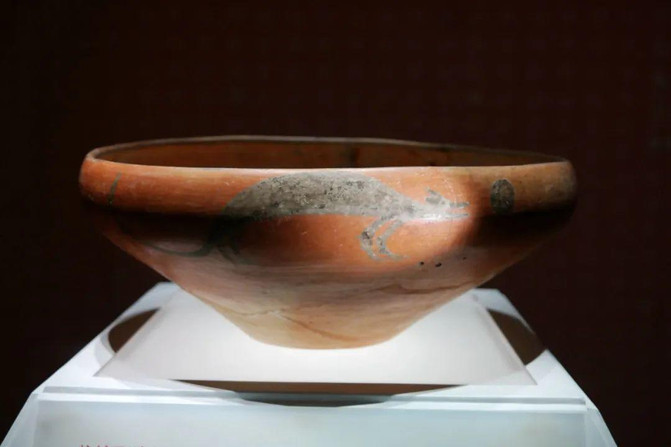
(Neolithic boat-shaped pot)
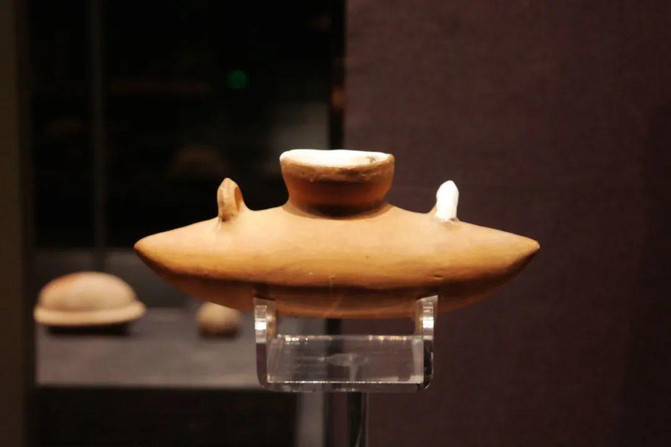
(Frog-patterned pottery cauldron from the Neolithic Era)

In the late Neolithic Era, about 5,000 - 4,000 years ago, China began to enter the threshold of a civilized society. There were many cities in the Yellow River Basin, and early countries generally appeared. Sites such as Shenmu Shimao in northern Shaanxi marked the ancient era-the arrival of the Longshan Era.
(Neolithic large-pitched jar)

If you look closely at the painted pottery above, you will find that most of them are painted with fish, birds and flowers. Fish patterns and bird patterns are distinctive symbols of Banpo culture and Miaodigou culture. The interaction between fish and birds on the painted pottery implies the interaction between the two emperors of Yan and Huang in the Yellow River Basin. Some painted pottery show strong fish and weak birds, while others are the opposite., representing the replacement and transformation of Chinese society. In the later period, fish and birds merged and bloomed into flowers, which became the most representative motif of decoration in Miaodigou culture later, implying that after the collision of blood and fire, the two tribes achieved tribal integration and formed the original mark of the Chinese nation. Some experts believe that painted pottery with "flower" patterns may be the origin of the Chinese people's name.
zongzhouIn the late prehistoric period, the development of productivity and the accumulation of materials led to the establishment of Xia Shangzhou, the three major dynasties of the Bronze Age. Although both the Xia and Shang Dynasties were headquartered in Henan, a large number of Shang Dynasty bronzes were found in Shaanxi, showing that Shang culture covered the entire territory of Shaanxi. The developed Shang culture laid the economic and material foundation for the strength of the Zhou people in the Zhouyuan area in the late Shang Dynasty.
(Shang Dynasty's Yue)

(Two-headed centipede pattern from the late Shang Dynasty)

The ancestor of the Zhou tribe was named Houji. He initially made a living in agriculture in Tai (now Yangling District, Shaanxi Province). Hougong Liu (another leader of the Zhou tribe) lived in Bin (in Xunyi and Bin County, Shanxi Province), and the tribe began to prosper.
During the reign of King Wu Yi of the Shang Dynasty in the 12th century BC, the ancient Duke Danfu moved to Zhouyuan (Fufeng and Qishan areas of Baoji in today's Shaanxi Province) to build city walls, build palaces, and set up governing institutions. The Zhou people absorbed the essence of Shang culture, created the splendid pre-Zhou civilization, and developed into a powerful country in the West of the Shang Dynasty.
After a century of development, when King Wen Ji Chang, Zhou was already the overlord of "two out of three parts of the world" under the rule of Shang Dynasty. In 1046 BC, King Wu destroyed the Shang Dynasty, established the Western Zhou Dynasty, and established the capital Haojing (i.e. Zongzhou, now Chang 'an District of Xi'an).
After King Wu died of illness, King Wu's younger brother Ji Dan, Duke of Zhou, assisted the young and weak King Cheng, put down the rebellion in the royal family and the eastern countries, and built Luoyi, the eastern capital (That is, Chengzhou, now Luoyang, Henan), and summarizing the political and historical experience and lessons since ancient times, based on the basic principle of "Zhong", the system established in which political power was inherited by the eldest son was a large number. The second son could endow the state and establish the country as a vassal, or a small number, but it was a large number within the country. By analogy, a concentric circular hierarchical structure of the emperor, princes, ministers, scholars, common people, workers, merchants, and slaves was created. Each class protected the emperor like stars on the sky revolving around the northern celestial pole. It is called "Shifan Screen Week".
"The names are different, but the rituals are also different." Different classes enjoy different rights to sacrifice. Sacrifice is not only a pure form of etiquette, but also a symbol of rank. There are strict distinctions in terms of shape, decoration, size, number and combination of ritual utensils to show the identity and power of the owner of the vessel. Therefore, Confucius said: "The utensils contain rituals, and the rituals embody righteousness."
The Western Zhou Dynasty established a strong royal system. The Zhou Dynasty used etiquette and music, and the etiquette system was highly developed, which had a profound impact on later generations. As a result, the Chinese nation was famous around the world as a country of etiquette.
(Stone chime: unearthed in Fufeng County, Baoji)

(Five Sacrifices to the "Harmful Husband" Bell: Unearthed in Fufeng, Baoji)

(Duoyouding: One of the treasures of the town hall, unearthed in Doumen Town, Chang 'an District; an inscription of 279 characters is engraved on the inner wall of Duoyouding, which details the battle situation of General Duoyou leading his army to resist the intrusion of the Jingshui River during the reign of King Li of the Zhou Dynasty. It was one of the important weapons of the Western Zhou Dynasty)
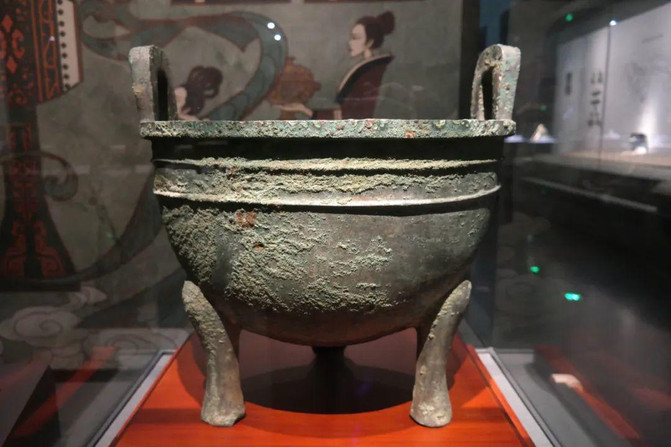
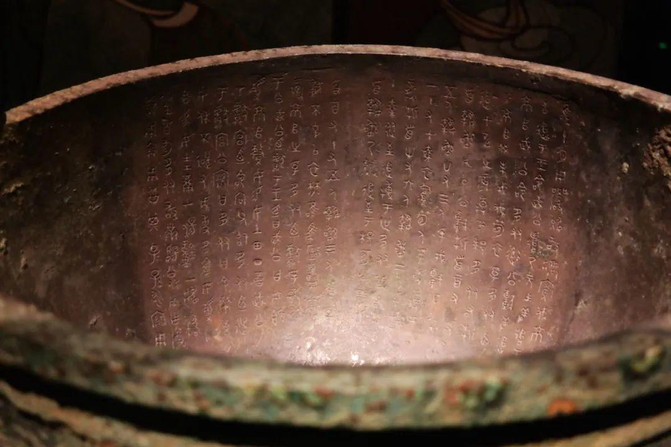
(Fang Zun: Unearthed in Lijia Village, Mei County, Baoji)

(Niu Zun: Unearthed in Hejia Village, Qishan County, Baoji. The shape is vigorous and vivid, and the decoration is gorgeous and smooth. It is a masterpiece of Western Zhou bronze art)

(Xizun: Unearthed in Shigu Mountain, Baoji)
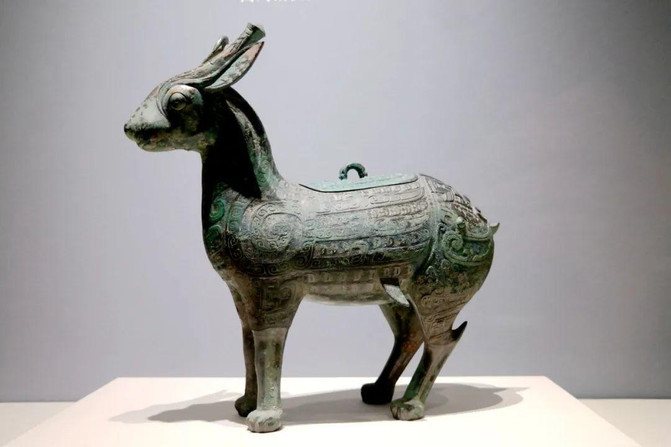
(Bogeyou: unearthed in Baoji)

(Bronze Man: Unearthed in Baoji)

(Dayuding: unearthed in Mei County, Baoji, a national treasure that is prohibited from being exhibited abroad. The one in Shaanxi Expo is a replica, and the original is hidden in the National Museum)

(Riji Gong: Unearthed in Qijia Village, Fufeng County, Baoji. The inscription on the cover shows that this vessel is a sacrificial vessel forged by the maker for his late father Riji; the shape and decoration are extremely gorgeous, and the appearance is solemn and generous. The animal face, Kui dragon, bird, tiger pattern, etc. are in the same vessel. It is complex but not chaotic, with reasonable composition, and clear primary and secondary. It is a model of bronze ware in the Western Zhou Dynasty)

(Tawei: It was unearthed in Qijia Village, Fufeng County, Baoji. The name "Ta" of the maker was cast in the cover, so it was called Tawei. People of the Zhou Dynasty used the Tawei as a match with the plate. Before and after banquets, they had to perform a ritual of washing hands. The plate was used to inject water, and the plate was used to receive washed wastewater)

(Four-legged toner: unearthed in Hejia Village, Qishan County, Baoji)

strong Qin
In 771 BC, Haojing was conquered by Quanrong, King You of Zhou was killed, and the Western Zhou Dynasty was destroyed. The following year, King Ping of Zhou moved eastward and established the capital Luoyi, known as the Eastern Zhou Dynasty in history.
(The Huaqing Palace Scenic Area located in Lintong, Xi'an, is backed by Mount Li. King You of Zhou used the fire here to entertain the princes, causing the enemy to arrive and no one to rescue him)
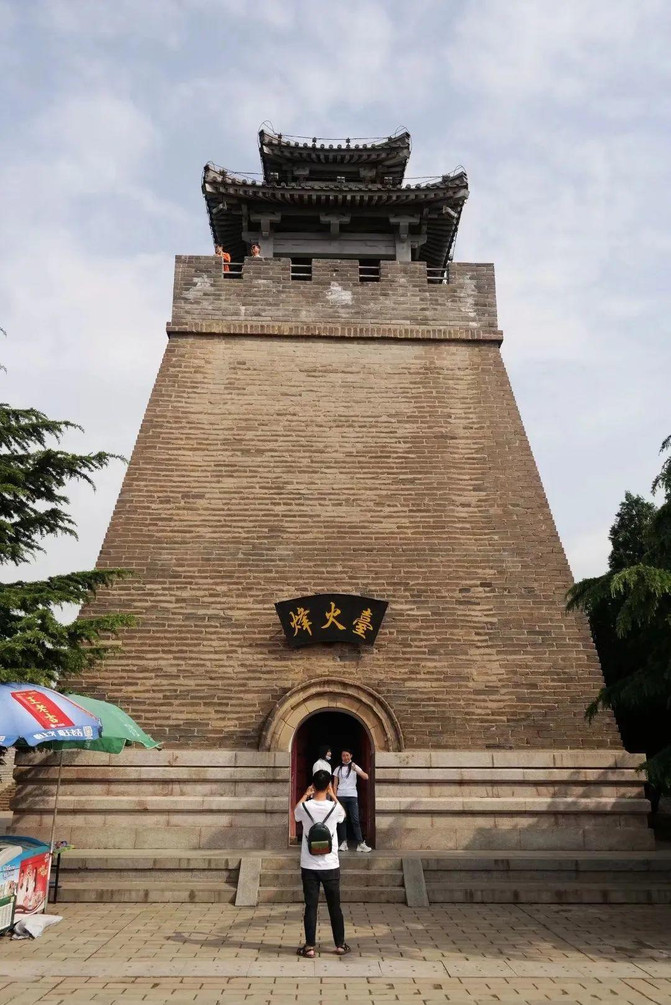
The Eastern Zhou Dynasty was divided into two periods: the Spring and Autumn Period (770 - 476 BC) and the Warring States Period (475 - 221 BC). During this period, five tyrants and seven heroes appeared one after another. After 500 years of wars and attacks, the powerful Qin Dynasty finally won and unified the country.
The Qin people originally lived in the Ying tribe of Shangyan (now Laiwu and Qufu in Shandong) in the east. In the early Zhou Dynasty, they were forcibly moved westward to the southeastern part of present-day Gansu Province due to rebellion, and lived in intertwining with the Xirong tribe.
In the middle of the Western Zhou Dynasty, a Qin man named Fei Zi raised horses for the King of Zhou in the Wei River area and was granted a fief in Qin (now Tianshui, Gansu). Fei Zi took his fief as his surname and was called "Qin Ying".
When Quan Rong invaded Haojing, Duke Xiang of Qin rescued the Zhou Dynasty and escorted King Ping to move eastward. Therefore, King Ping granted Duke Xiang a vassal and gave him land west of Qishan. The Qin people officially established the country. Later, they moved the capital several times and continued to move eastward. By the time of Duke Mu of Qin, Qin became one of the five tyrants of the Spring and Autumn Period. During the reign of Duke Xiao of Qin, Shang Yang was appointed to reform, and Qin became the most powerful vassal state in the middle and late periods of China.
In 246 BC, Ying Zheng, the king of Qin, ascended the throne and led the Qin army to conquer the six countries of Han, Zhao, Wei, Chu, Yan and Qi. In 221 BC, he established the first unified centralized empire in Chinese history-Qin. Later, Qin invaded the Xiongnu north and expanded its northern territory to the Hetao area north of the Great Wall; Nanping Baiyue extended its southern territory to the entire Lingnan area.
The State of Qin carried out an unprecedented integration of the political system and culture of the Xia, Shang and Zhou Dynasties. The central government implemented three princes and nine ministers, and the local government replaced the system of prefectures and counties. The policy of sharing the same texts, cars on the same tracks, and unified weights and measures was implemented nationwide, promoting the formation of China's unified concept of "world".
Ying Zheng, the king of Qin, believed that he had more than the three emperors and five emperors, and took the words "emperor" and "emperor" to call it the "first emperor". From then on, the title "emperor" has been used by successive emperors for more than 2,000 years.
Below, let's appreciate the grandeur and grandeur of the Great Qin Empire from cultural relics.
(Bronze Dragon: The base of a giant musical instrument stand in Qin. Qin culture has a tradition of pursuing great momentum. After Qin destroyed the six countries, this tradition was brought to its extreme. The bronze dragon was a work of the Qin Empire at its peak, demonstrating the strength of the Qin Empire)
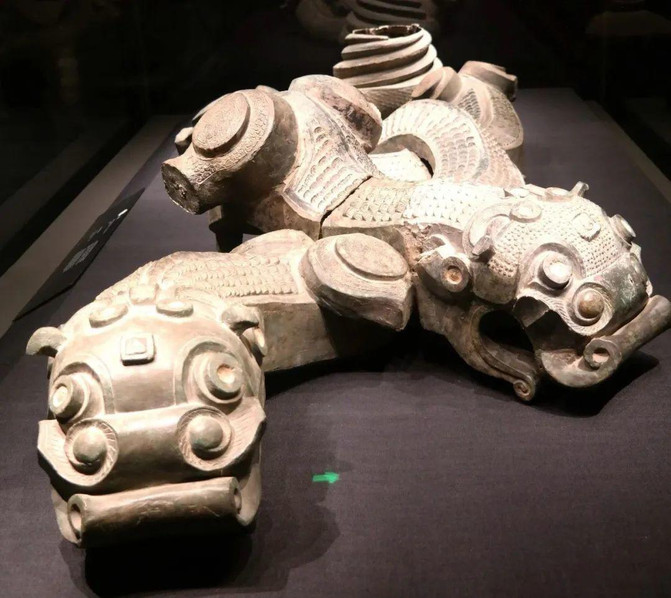
(Wrong gold Du Hufu Fu: The Fu is a certificate used by the ancient court to convey orders and mobilize the army. It is divided into left and right halves. The right half is left in the capital, and the left half is kept by the army stationed outside. When transferring troops, the imperial court emissary went with the right half and verified it with the left half of the Fu of the army leader, and the army can act according to the orders conveyed by the envoy.)

(Terracotta Warriors: Painted kneeling and shooting figurines)

(Terracotta warriors: Civil servant terracotta warriors. Although the terracotta warriors we see now are dull and colorless, they were originally painted with very rich and bright colors)

(Stone armor of the Qin army)

(Copper chariots and horses: Two copper chariots and horses were found in the chariot and horse pit on the west side of the Mausoleum of Qin Shi Huang. They imitate real people, real chariots and real horses at a ratio of one-half. They have complex structures and well-made, and are known as the "Bronze Crown")

(Bronze cranes: 46 bronze waterbirds, including swans, geese, cranes, etc., were unearthed in the donation pit of the Qin Shihuang Cemetery, indicating that the burial pit was trying to create a water environment)

xionghan
In 210 BC, Qin Shi Huang died of illness while on a patrol. Three years later, the Qin Empire fell. In 202 BC, Liu Bang stood out among many anti-Qin forces, established the Han Dynasty and established Chang 'an as its capital.
The Han Dynasty was divided into the Western Han Dynasty (202 BC-8 AD) and the Eastern Han Dynasty (25 - 220 AD). During this period, Wang Mang established himself on behalf of the Han Dynasty and established a short new dynasty (9 - 23 AD).
Liu Bang, the Emperor of the Han Dynasty, inherited the Qin system, and at the same time advocated the idea of "governing by doing nothing" and implemented a policy of recuperation. This played a major role in social stability and economic development in the early Han Dynasty and laid a solid foundation for the prosperity of the Han Dynasty in the future. The Han Dynasty lasted for more than 400 years, and its prosperous times occurred frequently, such as "the rule of Wenjing","the prosperous times of Hanwu","the rule of filial piety and Xuan","the rejuvenation of Guangwu","the rule of Mingzhang","the prosperity of Yongyuan", etc.
Among all the emperors of the Han Dynasty, Emperor Wu of the Han Dynasty was the most talented and courageous. People often juxtapose him with Qin Shi Huang and call him "Emperor Qin and Han Wu". The Emperor Wu of the Han Dynasty established provincial governors politically, strengthened centralization of power, and consolidated the unity of political power; culturally, he established the Imperial College, employing talents based on talents, selecting talents and appointing good people, rejecting hundreds of schools, and focusing on Confucianism; militarily, he expanded the southern and southwestern territories and attacked the Xiongnu. He twice sent Zhang Qian to the Western Regions, set up the Western Region Protectorate, and opened up the Silk Road; In terms of etiquette, Ganquan Palace was built,"with bamboo as the palace and the emperor in the middle", establishing the sacrifice to heaven as the highest sacrifice in the country, making the ritual of sacrifice in the suburbs known as the core symbol of the legitimacy of subsequent dynasties.
Under the management of Emperor Wu of the Han Dynasty and other wise kings, the Han Dynasty had a vast territory, four aunts served as guests, a prosperous economy and a prosperous culture. It was the most powerful country of its era and one of the most glorious dynasties in Chinese history.
(Golden monster of the Western Han Dynasty: This is an ornament on the crown of the Xiongnu leader, reflecting the Xiongnu people's worship of brave and powerful animals)

(Gilded copper silkworm from the Han Dynasty: All parts of the silkworm are clearly carved out, with lifelike shapes, and are painted with their heads raised to spit out silk threads. This reflects the prosperity of sericulture and silk reeling industry in the Han Dynasty. It is a representative cultural relic of the prosperity of the silk fabric trade between China and the West., highlighting the prosperity of the Silk Road)

(Yuyu people in the late Western Han Dynasty rode winged horses)

(Jade figurine heads from the late Western Han Dynasty)

(Jade evil spirits from the late Western Han Dynasty)

(Jade pig from the Western Han Dynasty)

(Tao Yi Ma from the Han Dynasty)
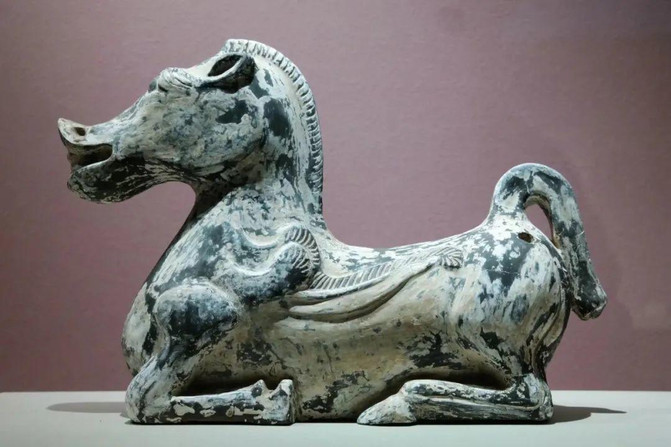
(Painted wild goose and fish lanterns from the Han Dynasty: exquisite in shape and exquisite structure, it is a masterpiece among lanterns in the Han Dynasty)

(Haiku figurines of the Han Dynasty: The Han Dynasty was a period of unprecedented development in the arts of music, dance, acrobatics and other operas. Full-time opera artists appeared. The country also had a special music and dance institution-Yuefu, which was responsible for collecting folk songs from all over the country. Processing and performance)

(Dance figurines from the early Western Han Dynasty)

(Wadang,"Han and World")

(Painted infantry figurines from the Han Dynasty)

(Copper hedgehog from the Western Han Dynasty)

shengtang
At the end of the Eastern Han Dynasty, the political situation was chaotic and divided into the Three Kingdoms of Wei, Shu and Wu. History entered a period of division between the Three Kingdoms, the Two Jin and the Northern and Southern Dynasties of about 370 years.
In 266, Sima Yan replaced Wei and established the Jin Dynasty, known as the Western Jin Dynasty in history, and briefly unified the country. In 316, the Western Jin Dynasty collapsed, and the Jin Dynasty moved south to establish the Eastern Jin Dynasty (317 - 420), while the north entered the sixteen kingdoms period of the "Five Unorganized China", followed by the Northern Dynasty: in 386, Tuoba Gui of the Xianbei nationality established the Northern Wei Dynasty. In 534, the Northern Wei Dynasty was divided into the Eastern Wei and the Western Wei Dynasty. In 550, the Northern Qi Dynasty replaced the Eastern Wei Dynasty. In 557, the Northern Zhou Dynasty replaced the Western Wei Dynasty. In 577, Yuwen Yong, Emperor of the Northern Zhou Dynasty, destroyed the Northern Qi Dynasty and the north was unified.
At the same time, after the Eastern Jin Dynasty, four regimes of Song, Qi, Liang and Chen rose in the south, collectively known as the Southern Dynasties.
During the Wei, Jin and Southern Dynasties, regimes changed and wars were frequent. Many ethnic minorities competed, clashed, and integrated in the north. Most of them established their capitals in Shaanxi. Agricultural civilization and grassland civilization were colliding and integrating. The Silk Road continued to prosper, and Buddhism spread eastward, promoting the development of culture and art.
(The "Thirteen Years of Shengping" in the former Liang Dynasty of the Sixteen Kingdoms was full of gold and mud)

(The terracotta warriors of the Northern Wei Dynasty)

(The polyhedral coal fine seal of Duguxin in the Western Wei Dynasty: seals of Duguxin, a general general of the Western Wei Dynasty, from different periods. Fourteen of them are engraved with seals such as "Chen Xin Shang Shu","Grand Dudu Seal", and "Zhuguo Seal". It is a precious cultural relic for studying the seal system of the Northern Dynasties)

(Buddha statues in the Northern Zhou Dynasty)

In 581, Yang Jian proclaimed himself emperor on behalf of the Zhou Dynasty and changed the name of the country to the Sui Dynasty. In 583, Emperor Wen of the Sui Dynasty built the capital Daxing, which was the beginning of Chang 'an City in the Sui and Tang Dynasties. In 589, the Sui Dynasty destroyed the Chen Dynasty and the country was unified again.
Just like the Qin Empire, although the Sui Dynasty unified the whole country, it was subjugated at the hands of the second emperor. The Tang Dynasty, which followed the Qin Dynasty, was the most glorious era in Chinese history.
Although the Sui Dynasty was short (581 - 619), it laid a solid foundation for the Tang Dynasty. Yang Jian, Emperor Wen of the Sui Dynasty, established the three-province and six-department system with a clear division of labor, strict and efficient, and was continued by later dynasties. Yang Guang, Emperor Yang of the Sui Dynasty, built the Grand Canal that runs through the north and south, attached importance to education, and established a system of selecting talents through examinations, which had far-reaching impact.
(Green glass bottle from the Sui Dynasty)

In 618 AD, Li Yuan proclaimed himself emperor and his country's name was Tang, which ushered in an epic and glorious era. Li Shimin, the second emperor of the Tang Dynasty, was talented and courageous. He followed advice like a person. During his reign, his politics was clear and his prestige spread far and wide. He was called "Tian Khan" by ethnic minorities. There is also a very high evaluation in history books: "Taizong's civil and military talents are higher than those of previous ancient times. It has lasted for three generations. China has never been prosperous."
During the Gaozong period of the Tang Dynasty after Taizong, there were abundant things and the people. The Eastern and Western Turks were unified in the Tang Dynasty. The territory of the Tang Dynasty reached its largest, and it was called "the rule of Yonghui" in history.
Later, Wu Zetian appeared and replaced the Tang Dynasty with the Zhou Dynasty. She attached great importance to talents and was known as "the gentleman fills the court". She was good at governing the country. It was known in history as "the rule of Wu and Zhou."
After Emperor Xuanzong of the Tang Dynasty ascended the throne, he advocated culture and education and governed the world. The Tang Dynasty reached its peak in economy, culture and art, and its national strength was unprecedentedly strong. It was called the "Kaiyuan Prosperity" in history.
The outbreak of the Anshi Rebellion led the Tang Dynasty to a downward spiral, but there were still the "Yuanhe rejuvenation" during the Xianzong period of the Tang Dynasty, the "Huichang rejuvenation" during the Wuzong period of the Tang Dynasty, and the "Dazhong governance" during the Xuanzong period of the Tang Dynasty. Industry and commerce in the middle and late Tang Dynasty still flourished and continued to shine with the glory of the imperial prosperity.
In 907, Zhu Wen forced Emperor Ai of the Tang Dynasty to retire to the throne, and the Tang Dynasty fell.
The Tang Dynasty was an inclusive and open empire. Its capital, Chang 'an, was the leading world metropolis at that time and was longed for by all countries. At that time, exchanges between China and foreign countries in Chang 'an City were extremely frequent. A large number of foreigners and Hu people lived together with the Han people for a long time, bringing together different cultures, thoughts and religions, giving the Tang Dynasty diversity, creativity and grandeur, and also creating an open mind and enterprising attitude towards life among the Tang Dynasty scholars. This can be seen from the peak of ancient poetry-Tang poetry. The prosperous age gave birth to powerful cultures, which were exported to Japan, the Korean Peninsula, the Indochina Peninsula and other countries and regions, having a profound impact on them and forming a Confucian cultural circle.
The atmosphere of the prosperous Tang Dynasty can also be seen from the gorgeous cultural relics.
(Gilded copper dragon with iron core)

(Gilded gold silver cup with vines and birds pattern)

(Green Glazed Pottery Boshan Furnace)

(Three-color glazed pottery fish pot)

(Three-color glaze pottery lying camel)

(Painted female dance figures in double buns)
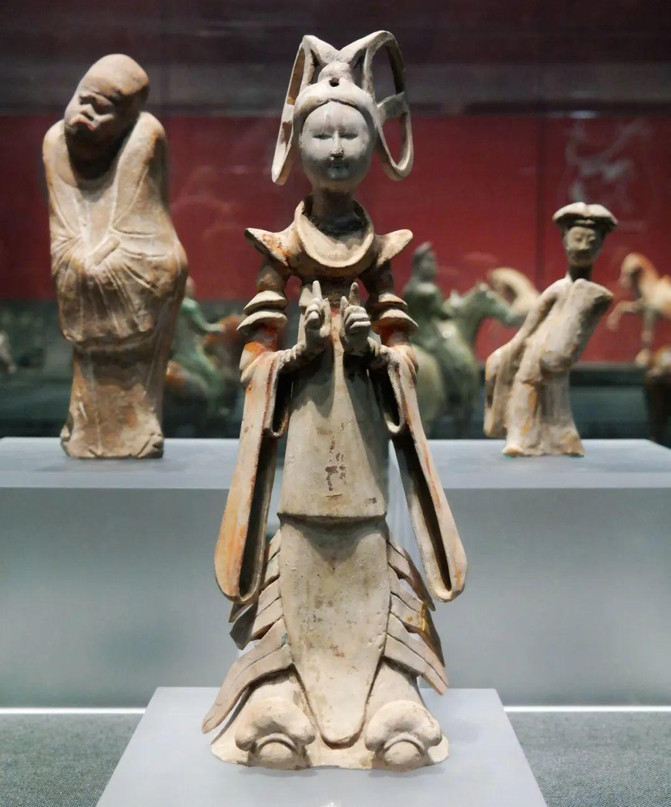
(Tao rap figurines)

(Painted female figurines kneeling down)

(Three-color Dragon Head Cup: This cup is a product of the blending of Chinese and foreign cultures. It not only has the characteristics of ancient Chinese wine vessels and the decorative style of dragons, but also has a similar appearance to the Western Laitong; Laitong originated in ancient Greece and spread to the east through Persia)

(Sancai Courtyard: The aristocrats of the Tang Dynasty lived in such courtyards)

(Shunling Stone Walking Lion: Shunling is the tomb of Wu Zetian's mother, Yang; the stone lion is a stone carving symbolizing guard in front of the Tang Dynasty's imperial mausoleum. The stone carvings of the tomb before the Tang Dynasty were mainly Tianlu and evil spirits. Lions originating in West Asia and Africa were introduced to China through the Silk Road and became One of the stone carvings of the Tang Dynasty's imperial mausoleum, and was followed by the stone carvings of the imperial mausoleum in subsequent dynasties; this stone lion is tall and majestic, showing the majestic and heroic style of the Tang Dynasty. It is the largest stone lion among Chinese dynasties. It is known as the" First Lion in the East")

In the Tang Dynasty, in addition to the Silk Road leading to the Western Regions, there was also a major transportation route extending southwest, passing through Gansu, Qinghai, and Xizang to Nepal and India. This was the famous Tang-Tibet Ancient Road.
At the beginning of the fourth century AD, the Murong Xianbei tribe in Liaodong moved westward to present-day western Inner Mongolia, Gansu and Qinghai, gradually annexing the local Qiang and other tribes, and their power continued to grow, eventually establishing the Tuyuhun State. In the early years of the Tang Dynasty, Tubo Zampu Songzan Gambo unified the entire territory of Tubo, created writing, developed economy and culture, and its national strength became stronger day by day. During exchanges with these regimes, the Tang-Fan Ancient Road came into being and played a huge role in the dynasties after the Tang Dynasty.
Let's take a look at the cultural relics that witnessed the trade on the Tang-Tibet Ancient Road.
(Seven-hole copper axe: belongs to the Kayue culture, a Bronze Age culture in the northwest region, located in today's Kayue Village, Huangzhong, Qinghai)

(Jade Wouloma)

(Painted clay sculptures of warriors erected figurines)
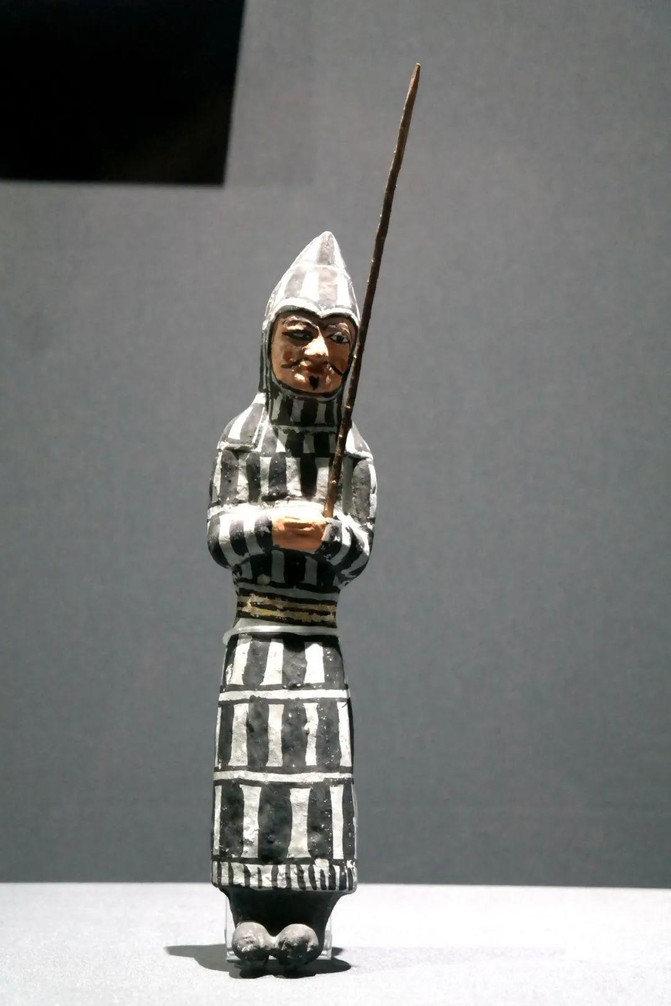
(Painted clay sculptures to play polo figurines)

(Bronze statue of Acuoye Guanyin: a unique image of Guanyin in Yunnan)

(Xizang chest: Gawu)

(Painted pottery male figurines: Do they look like Popeye?)

After the Tang Dynasty, China's political center moved eastward. Shaanxi no longer had an imperial capital, but it remained the political, economic and cultural center of the northwest region. For example, during the Northern Song Dynasty, the Dangxiang tribe established the Western Xia Dynasty and owned northern Shaanxi. In the early Southern Song Dynasty, the Jin army invaded Shaanxi and occupied most of Shaanxi. The Song and Jin Dynasties used the Qinling Mountains as a boundary and fought and interacted with each other, promoting ethnic integration.
(A celadon pot with beams and poured back into water during the Five Dynasties)

(Zhongshan Grottoes in the Northern Song Dynasty)

(Glazed pottery warrior figures from the Southern Song Dynasty)

(Han Bai Buddha statue from the Song Dynasty)

(Tao sumo figurines from the Jin Dynasty)
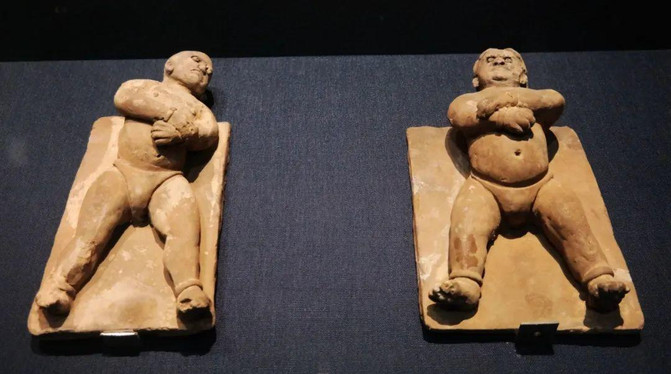
(Warriors of the Yuan Dynasty)

(Painted ceremonial terracotta warriors from the Ming Dynasty)
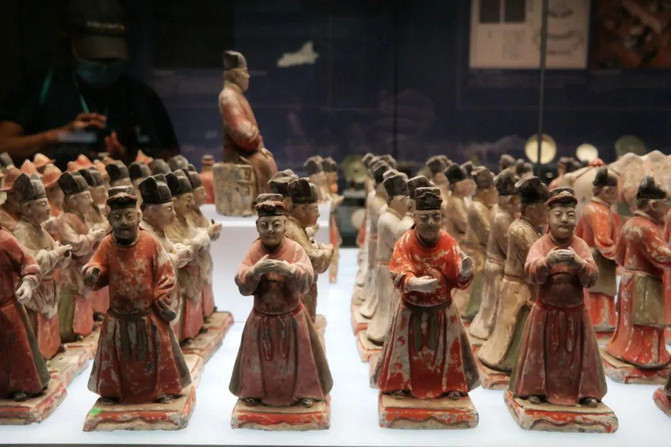
This is the end of the museum trip. I believe you already have a more specific and vivid answer to the question of Wenshou.
Finally, we might as well review briefly:
More than 6,000 years ago, on the painted pottery of Banpo Culture, fish and birds competed one after another, implying that the two emperors of Yan and Huang loved each other and killed each other. The fish and birds melted into "flowers". This is a manifestation of Chinese culture and the beginning of the descendants of Yan and Huang.
From then on, the illustrious Zongzhou, the heroic Lao Qin, the majestic Han Dynasty, and the brilliant Tang Dynasty appeared one after another, dancing the brilliance of Chinese history.

Previous Article:Walk into Xi'an, the ancient capital of the 13th Dynasty, visit the most essential attractions on the 2nd day, and travel through 6000 years
Next Article:Several months of health care tour on Beihai Shuangfei High-speed Railway departing from Xi'an
